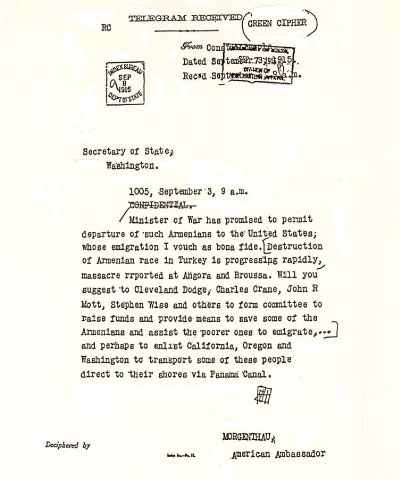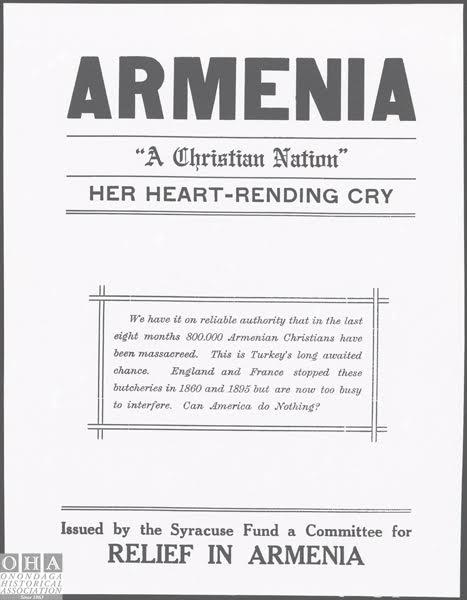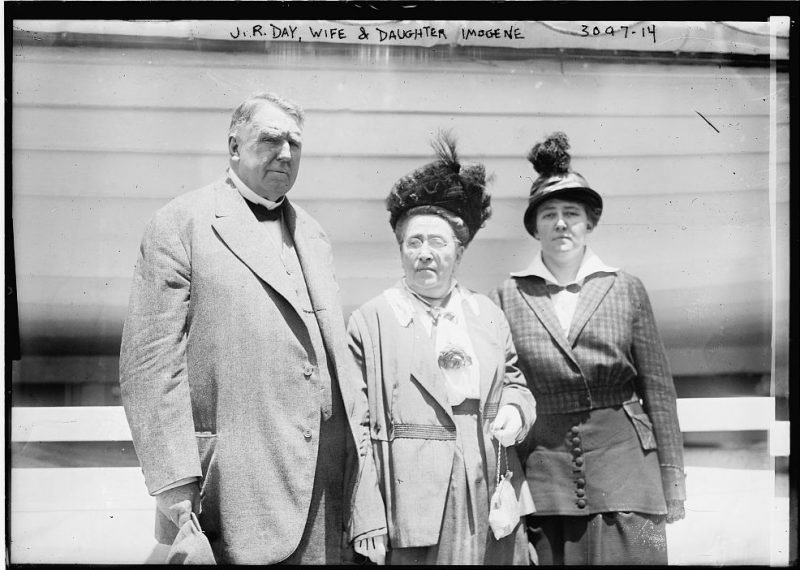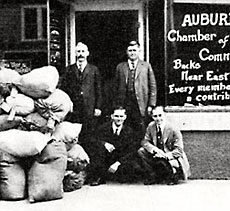Syracuse and Near East Relief
After a brief hiatus, we are excited to share that we have re-immersed ourselves into the rich history of the Near East Relief and its legacy. We plan to continue unraveling and sharing the complex web of our past through our archives, the fascinating stories of our relief workers, and those of related communities beyond.
When Near East Relief became the Near East Foundation in 1930, its focus shifted to helping this area of the world build more sustainable, prosperous, and inclusive communities. After 95 years in New York City, NEF relocated to Syracuse, New York in 2010. Little did we know at the time that NEF’s history with Syracuse started well over a century ago. This first dispatch shares recently discovered information on the organization’s long-time connection to Syracuse and its shared past with the Armenian diaspora.
Prior to 1915, displaced Armenians had already begun seeking a safe haven because of the violent treatment they received within the Ottoman Empire that severely escalated over time. As a result, a number of these Armenians settled in the city of Syracuse beginning in the 1890s.

“Map of the City of Syracuse, New York” by Norman B. Leventhal Map Center, 1901
Central New York has been a leader in religious and humanitarian efforts since before the Civil War, particularly the Protestant Reformed movement and later the Underground Railroad. Because of these religious leaders, Syracuse was nicknamed the “city of churches”, as the city still represents over a dozen denominations of Christianity alone.
These mission-driven churches and their leaders welcomed the Armenian community with out-stretched arms. In 1912, the Armenian Fourth Presbyterian Mission Church was established and gave the the Armenian community a new sense of permanence and purpose.
This initial community is what encouraged more and more refugees to settle in Syracuse to escape the systematic oppression and massacres they were facing in Europe towards the end of the Ottoman Empire. The city first found out about the Armenian Genocide in the way the rest of the United States did — via telegram.

This telegram, sent by Henry Morgenthau, was read aloud during a gathering of the Armenian community at the Fourth Presbyterian Mission Church. In response to the egregious accounts told in Morgenthau’s telegram, the church, along with other local leaders, established the first central New York chapter of the American Committee for Armenian and Syrian Relief (ACASR as NER was called prior to it’s charter).
Left- Morgenthau’s September 3rd, 1915 telegram that called for Americans to form a committee and get involved in the Armenian crisis.

One of the posters issued by The Syracuse Fund, a chapter of ACASR. Source: Onondaga Historical Association.
NEF’s predecessor, American Committee for Syrian and Armenian Relief, (also known as the American Committee for Relief in the Near East) consisted of prominent New Yorkers who all shared the common goal of providing immediate assistance to this area of the world.

One of these New Yorkers was a Methodist preacher and Syracuse University’s fourth and longest serving chancellor, James Roscoe Day. He was heavily involved in settling Armenians in the city and allowing a number of them to receive higher education through the establishment of a student refugee program.
Right- A photograph of James Roscoe Day with his wife and daughter circa 1910-15.
After arriving in Syracuse, many Armenians literally set up shop. They used their many skills and talents to open businesses as technicians, tailors, farmers, and grocers. As more and more Armenian immigrants continued to arrive, those already here offered them employment and a community set on lending a helping hand.
Americans living in Syracuse got to witness firsthand the impact citizen philanthropy had on the live of individuals and families fleeing perilous environments. These central New Yorkers believed that they could bring about change by donating their money, time, resources, and expertise.
In a recent panel at Syracuse University, NEF President Charles Benjamin reflected on NEF’s founding when he said: “There was a decision made by the leaders of the organization [NEF] to help those displaced integrate into their new communities, and to continue that work and to expand it. They saw that there was a great need, and limitless possibilities in terms of working with those refugee populations in their new environments and the communities that had received them.”

From the 1890s to now, Syracuse, along with other central New York cities like Rochester and Auburn, have long been a place for those in danger to escape to and begin a new life. Today, this mindset still exists as Syracuse serves as a sanctuary city. Syracuse communities remain committed to opening doors to all immigrants, refugees, and displaced people, particularly in regards to the current Syrian refugee crisis.
Left- Bundle Day in Auburn, NY.

Bundle Day in Rochester, NY.
Syracuse University’s connection to NEF continues to this day as well. After relocating to the area it began partnering with Syracuse University’s Maxwell, Whitman, and Newhouse Schools.
The work that the Near East Foundation started a century ago continues to be reflected in its work today as the humanitarian crisis unfolds in the Middle East. NEF’s local teams are working on the ground, side by side, with Syrian and Iraqi refugees in Jordan and Lebanon helping them to gain economic independence and achieve self-sufficiency, primarily through entrepreneurship, vocational training, and livelihoods support.
To learn more about the Near East Foundation visit http://www.neareast.org.
Special thanks to the Onondaga Historical Association as well as Robert George Koolakian for his book, Struggle for Justice: A story of the American Committee for the Independence of Armenia, 1915-1920.
